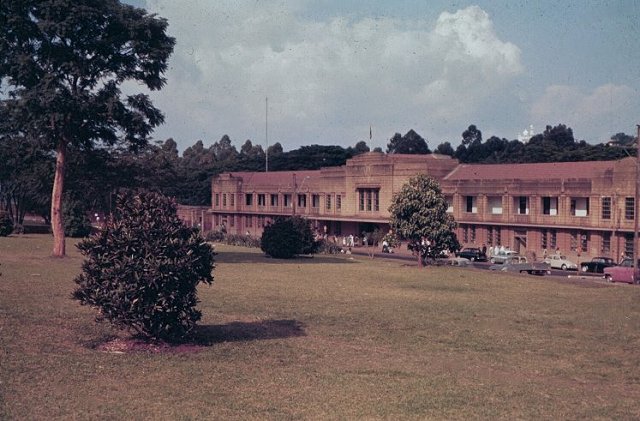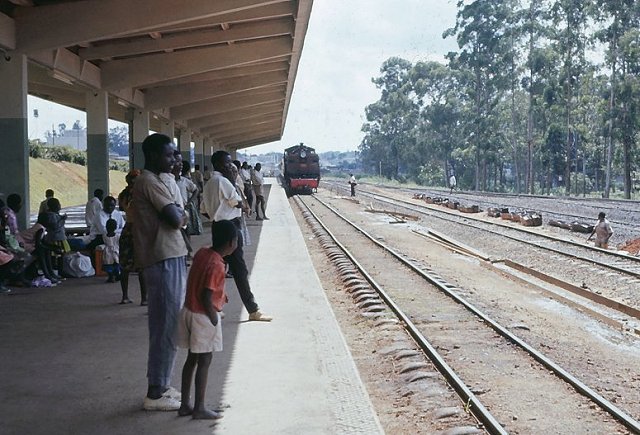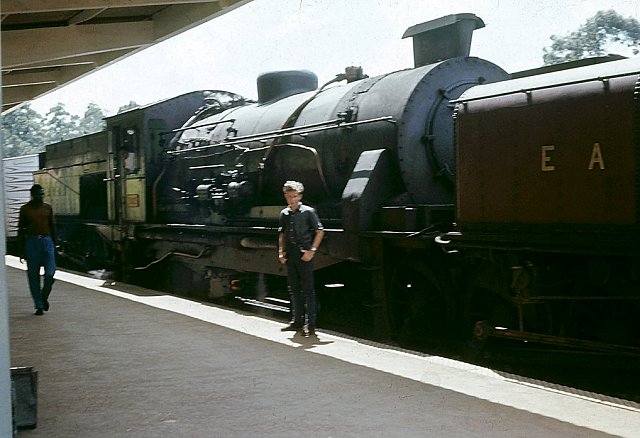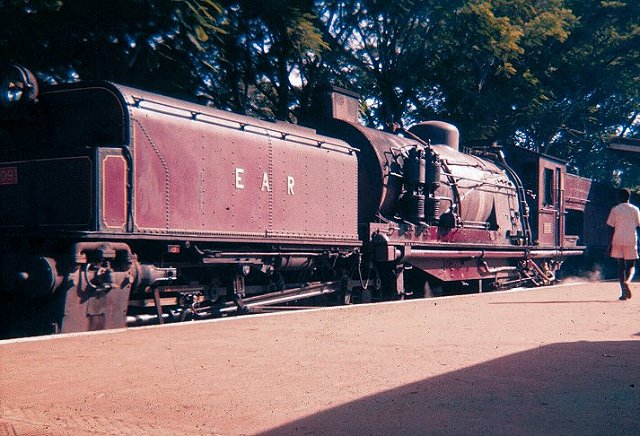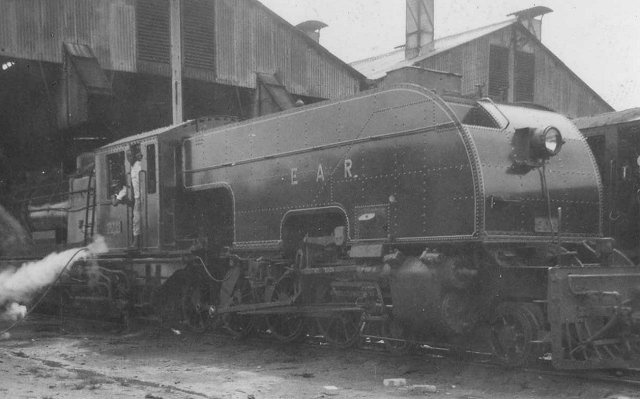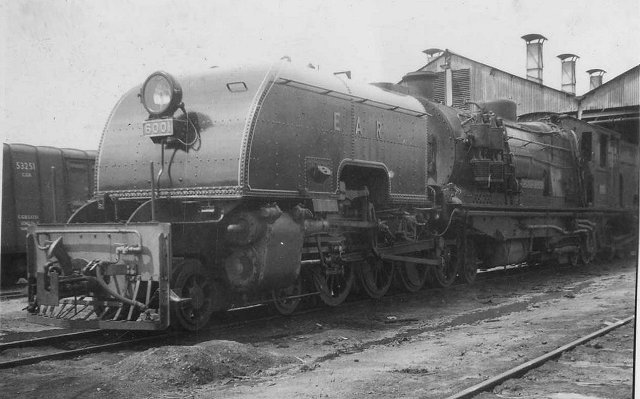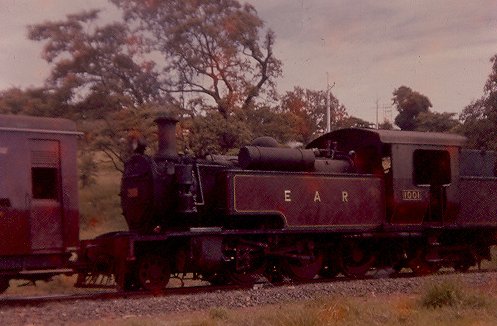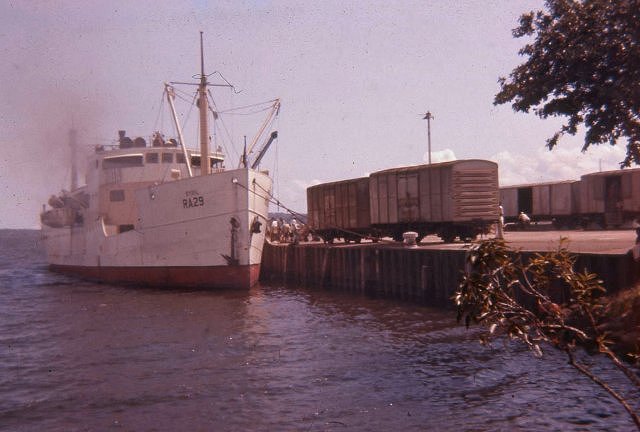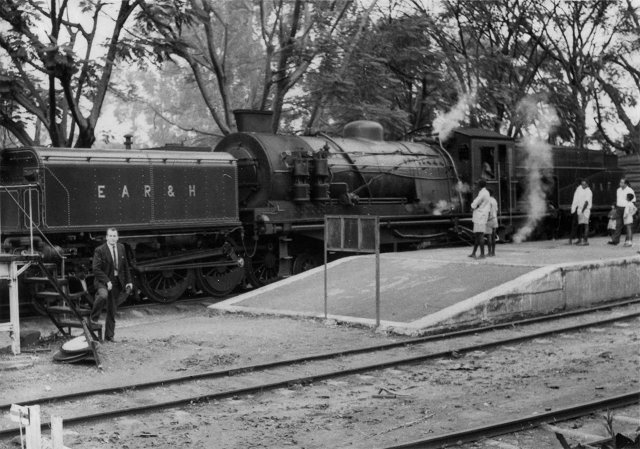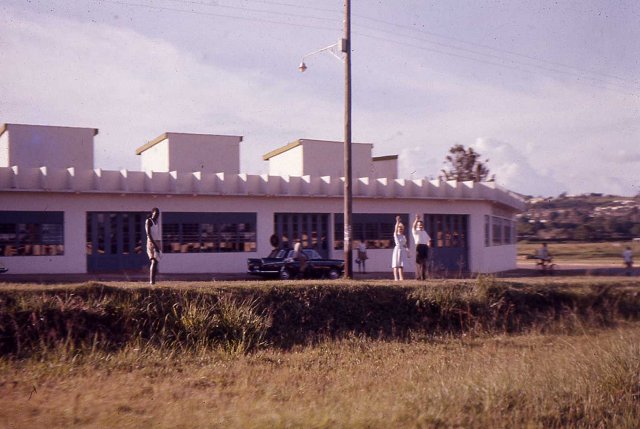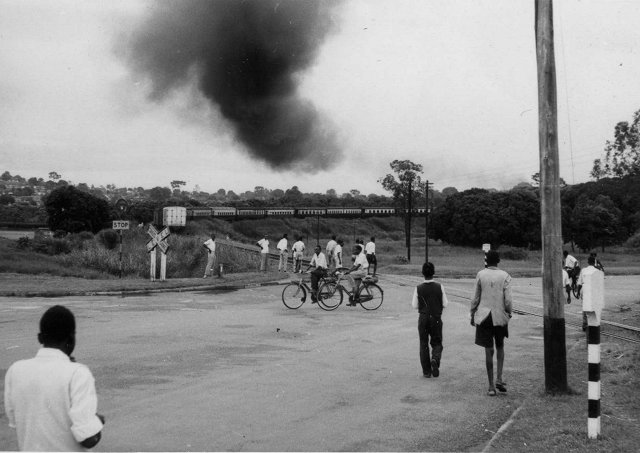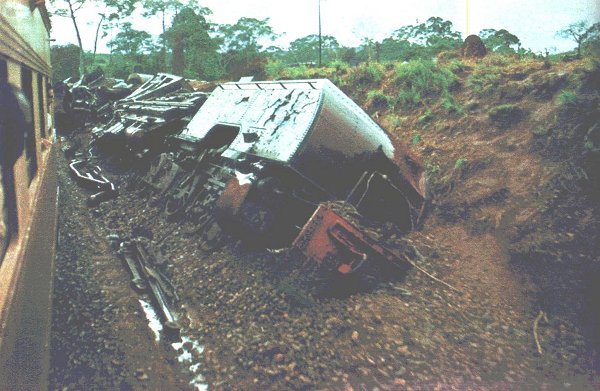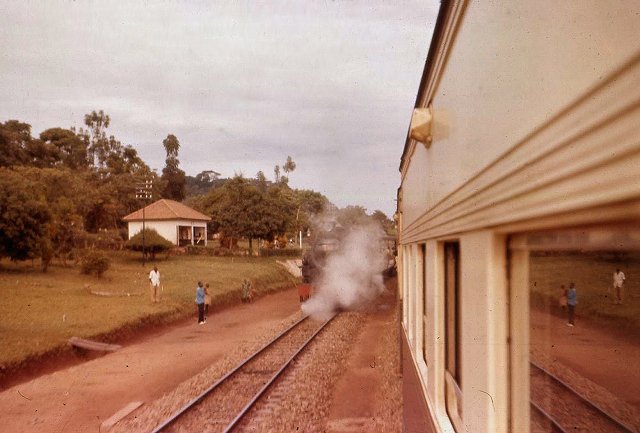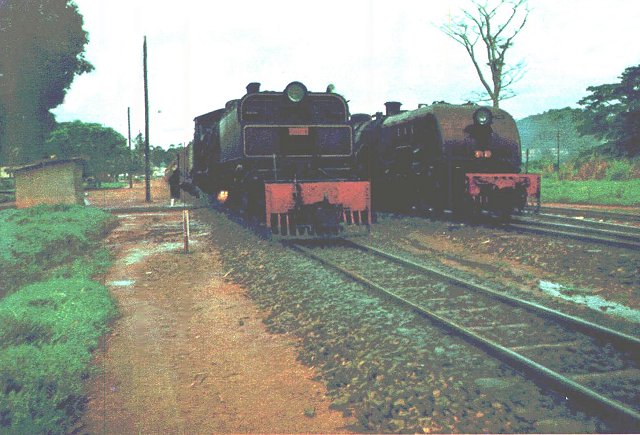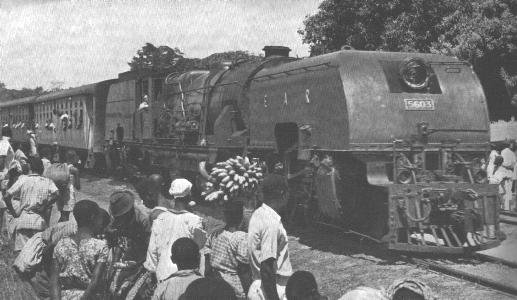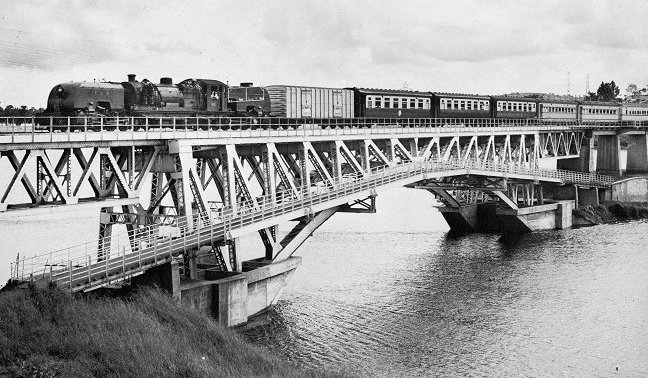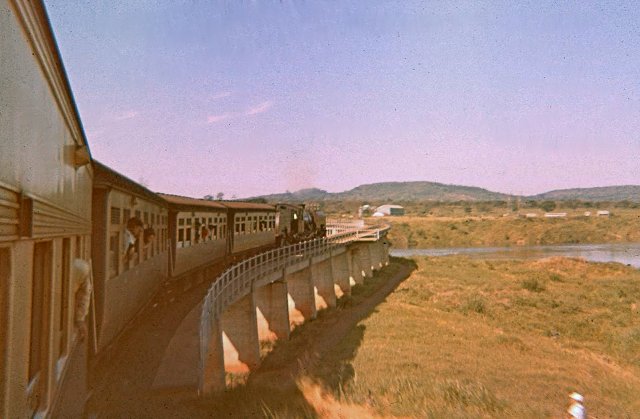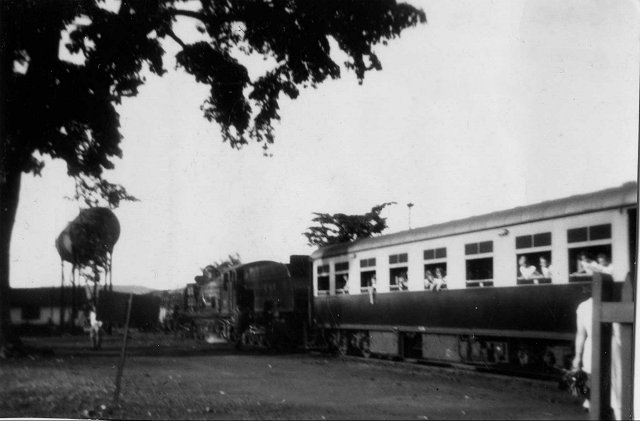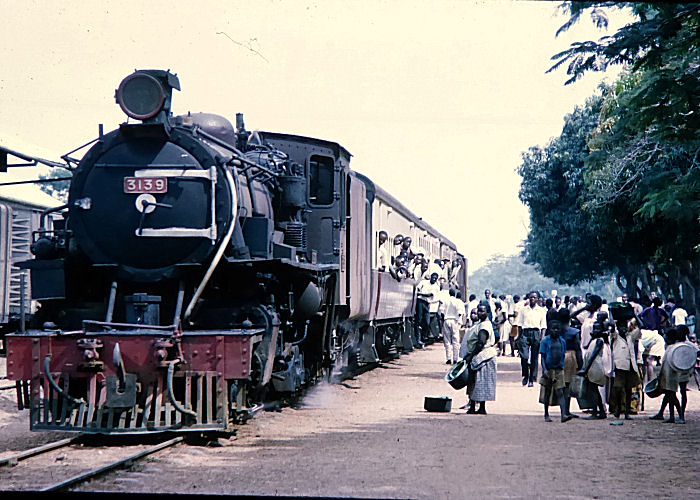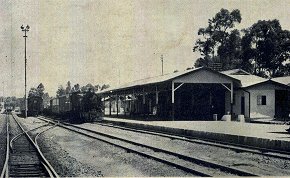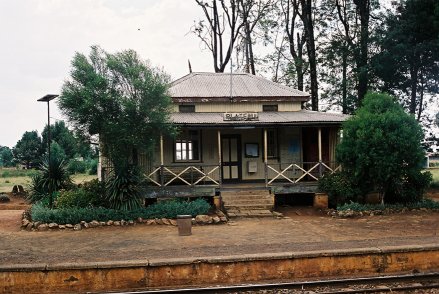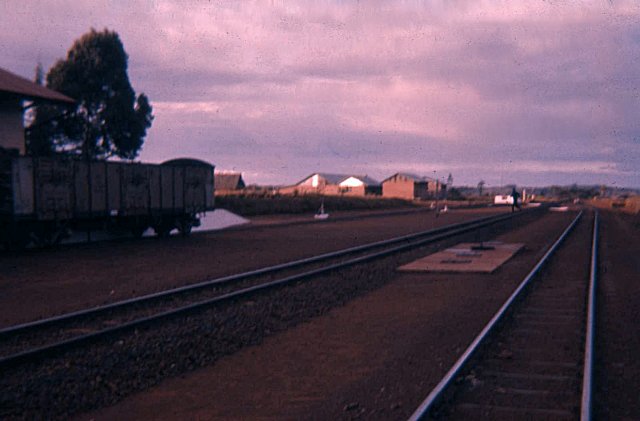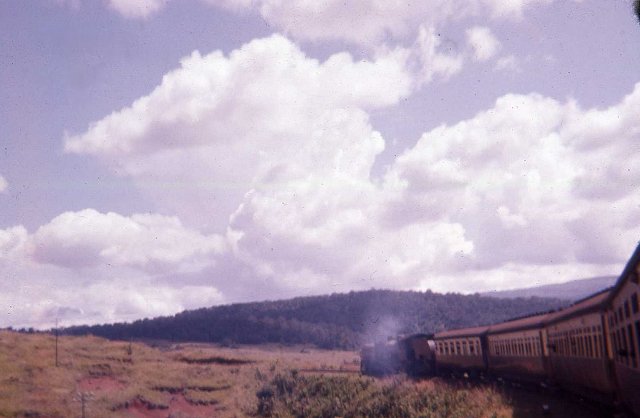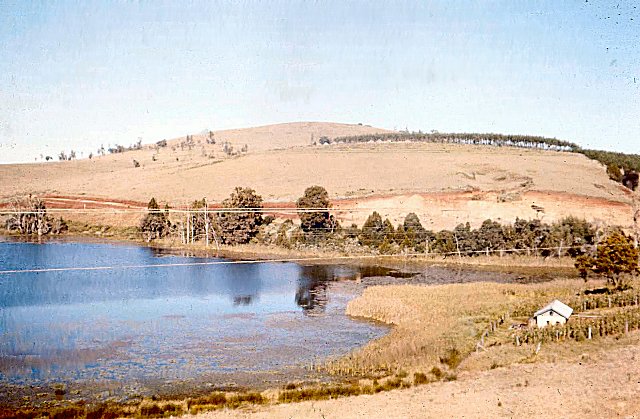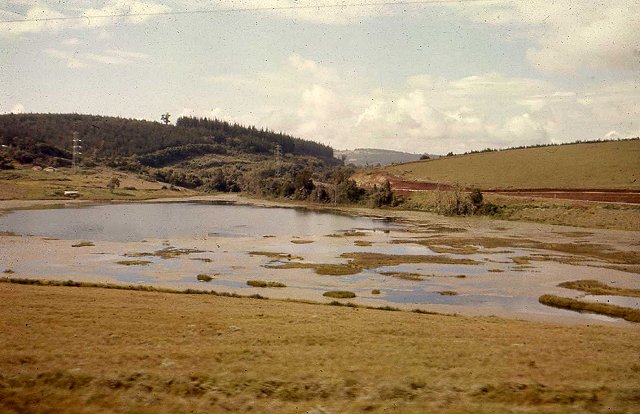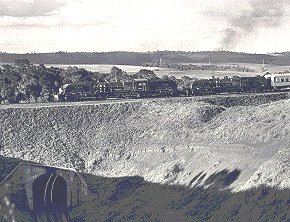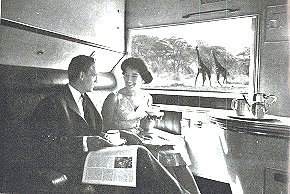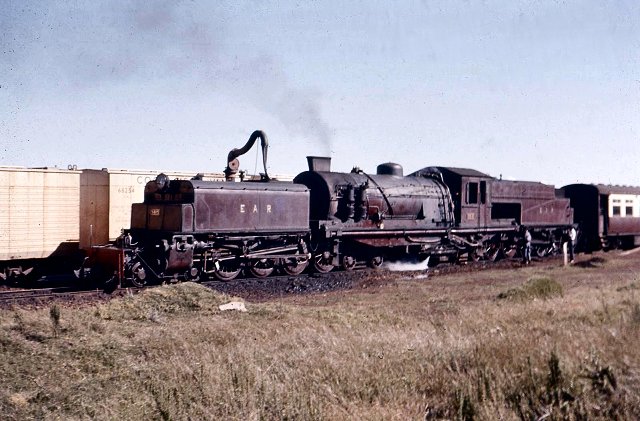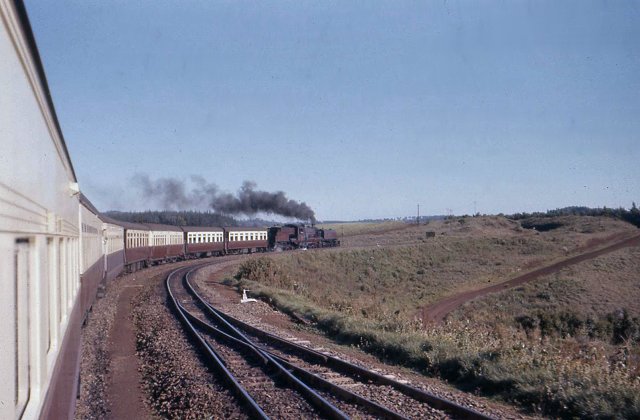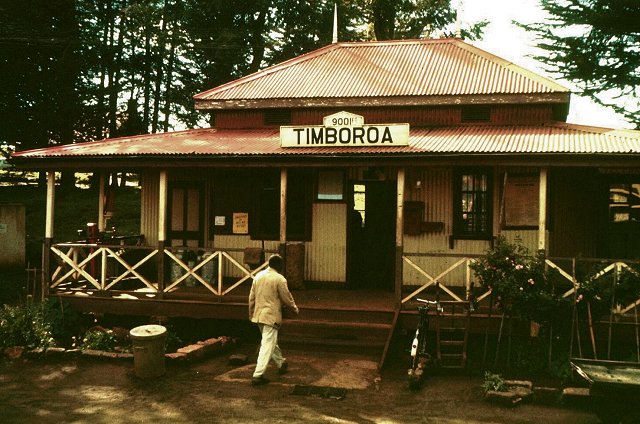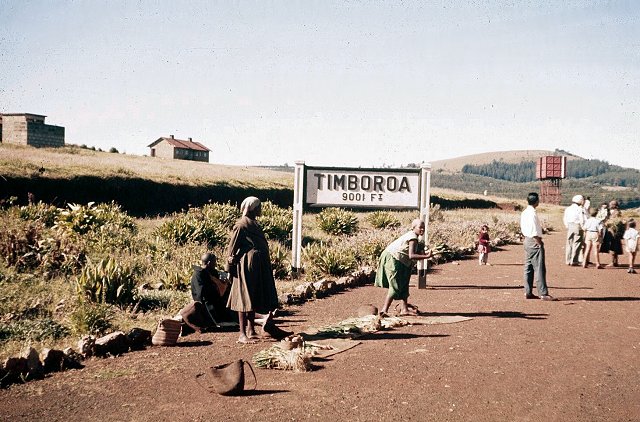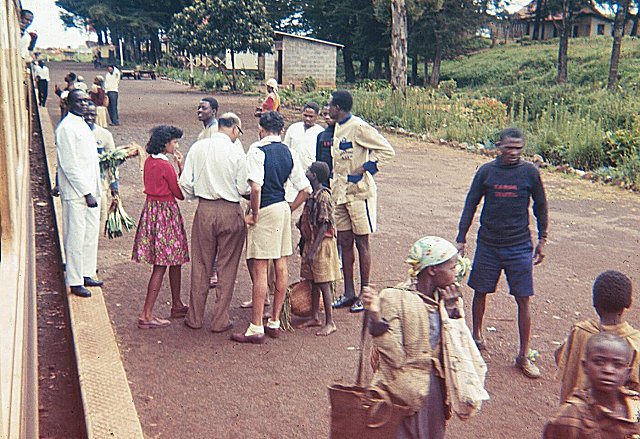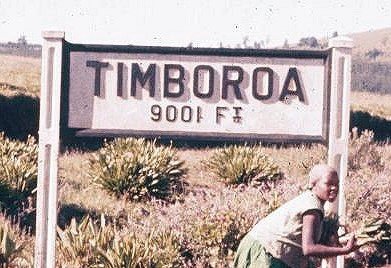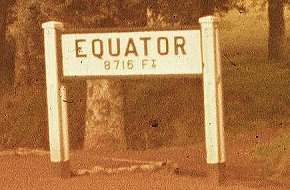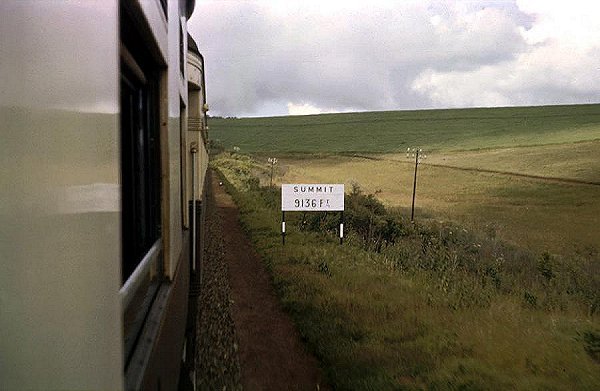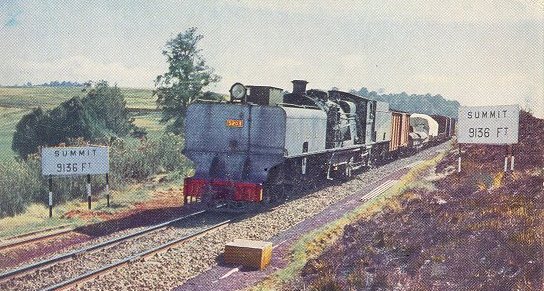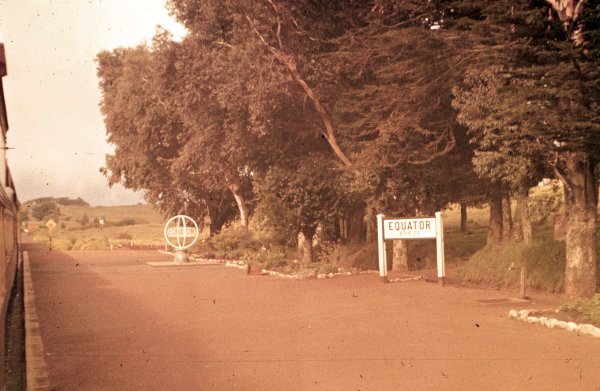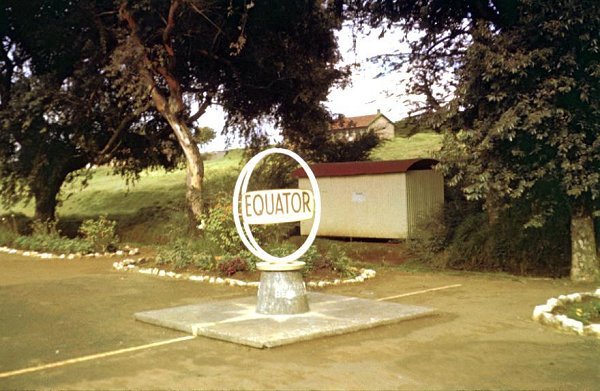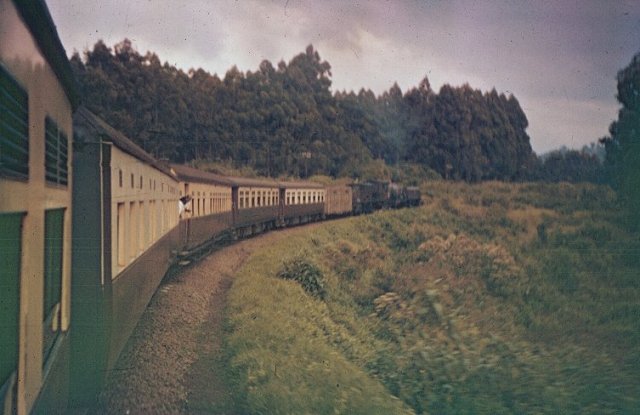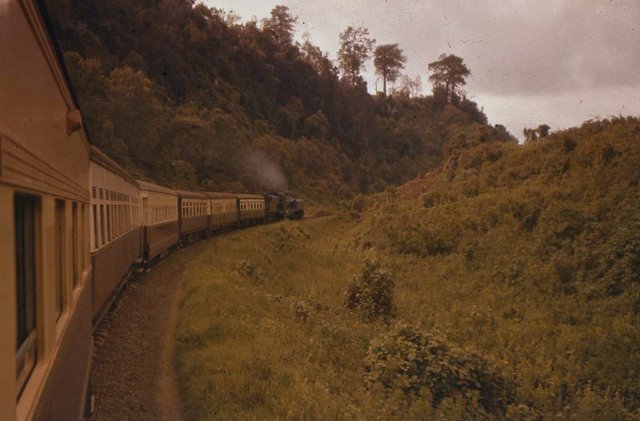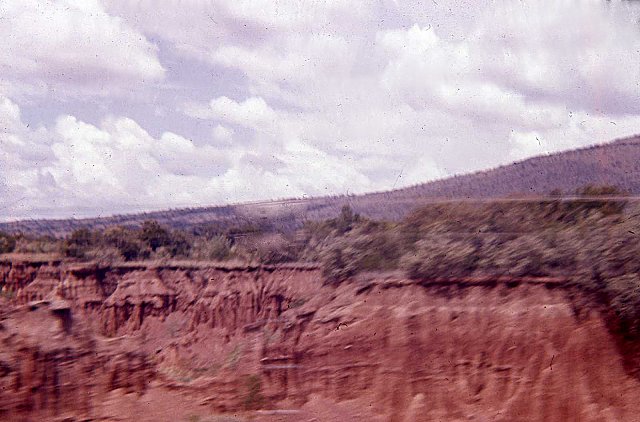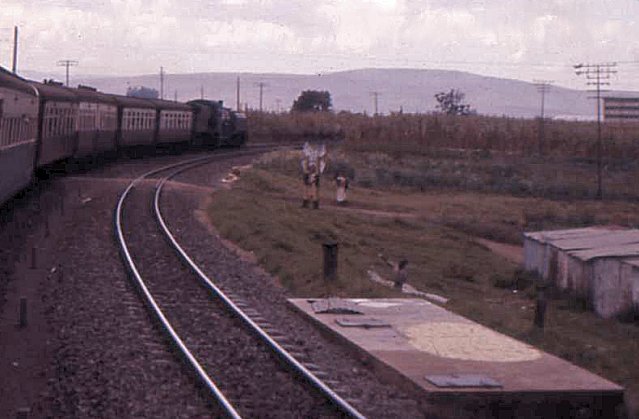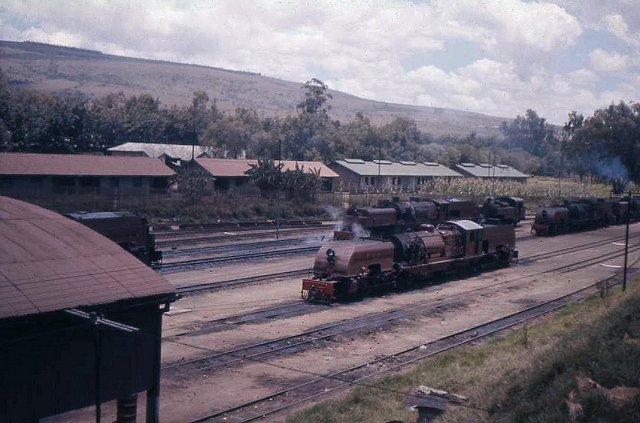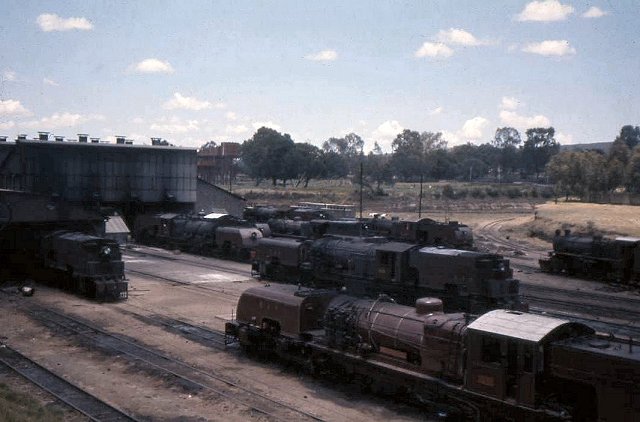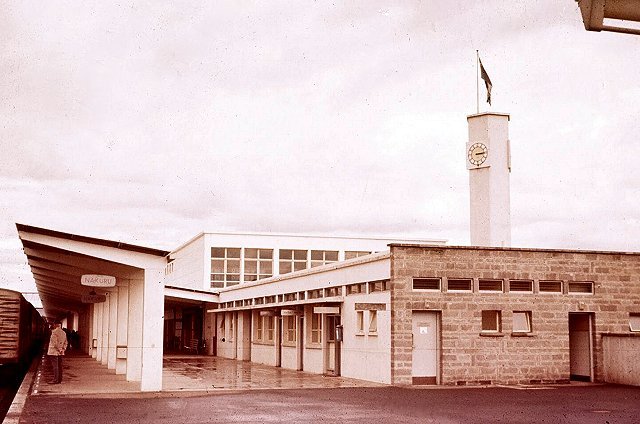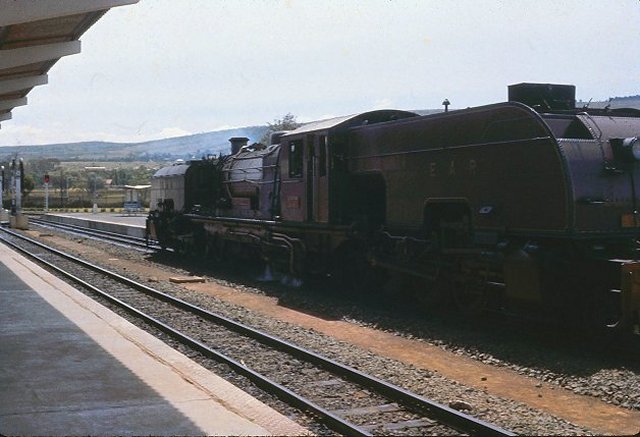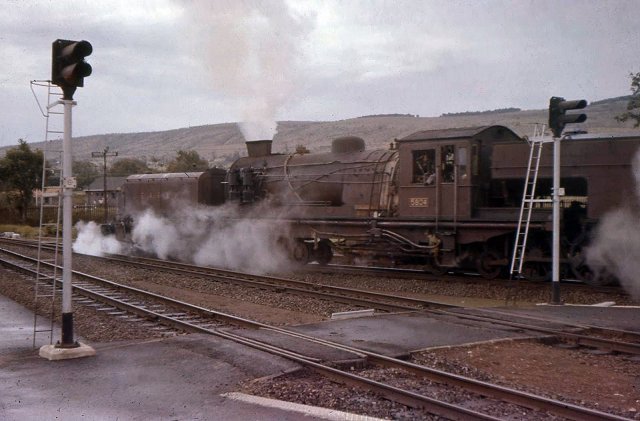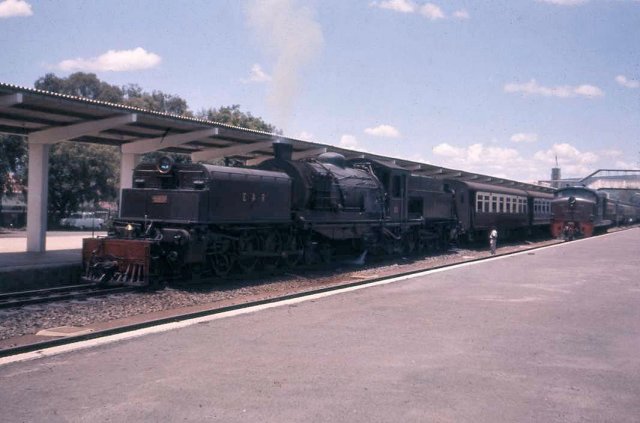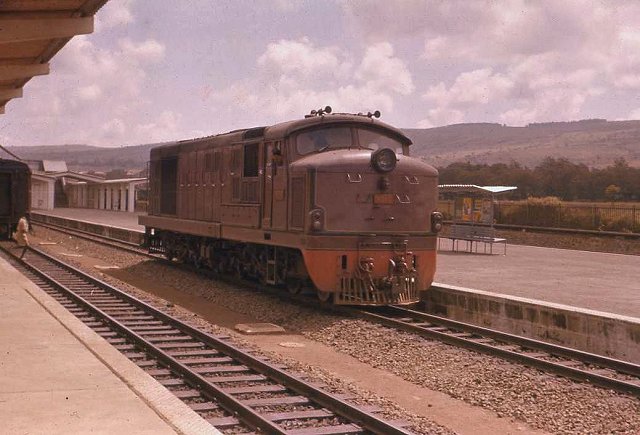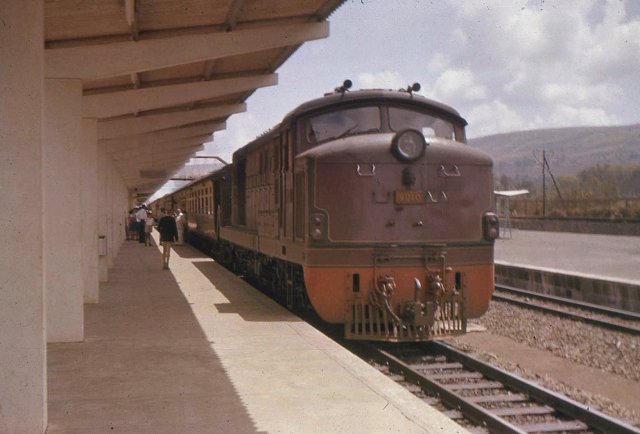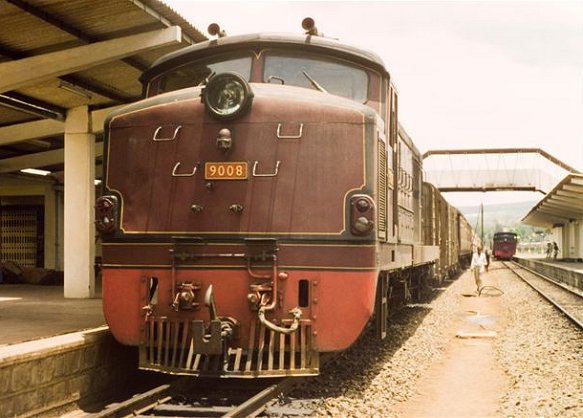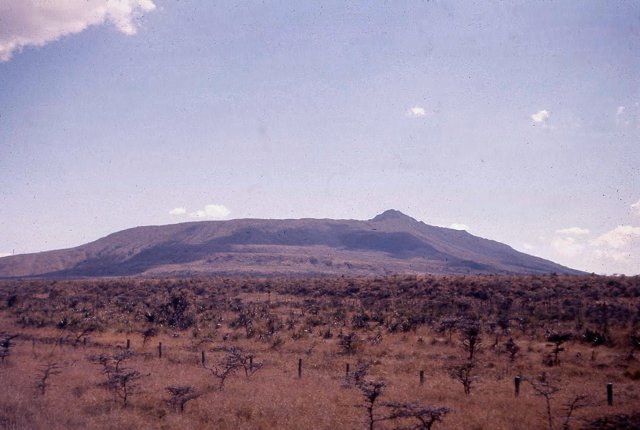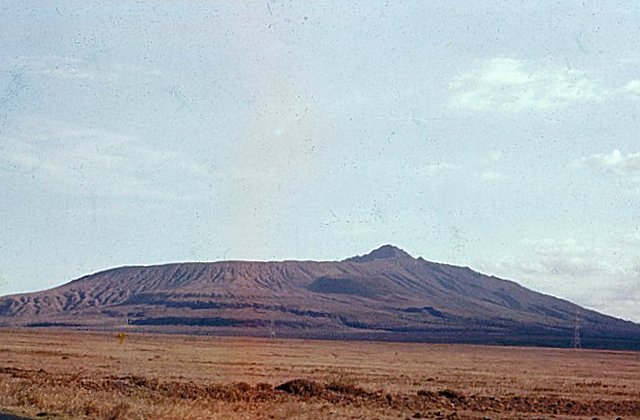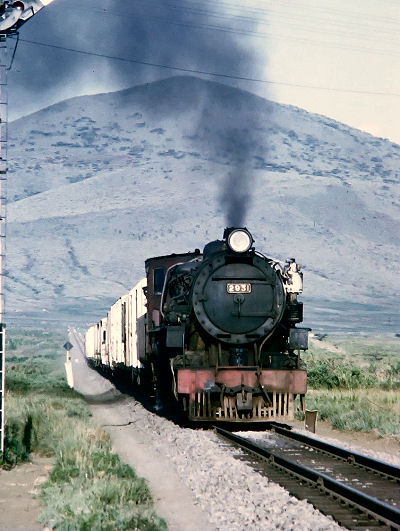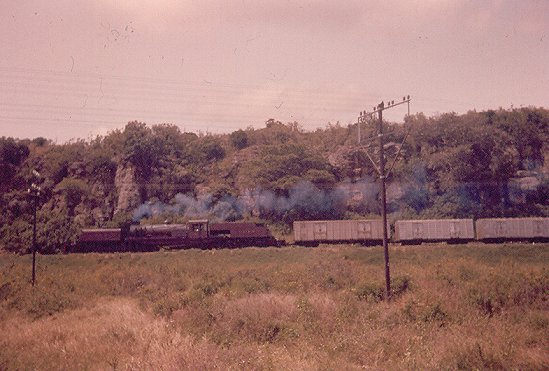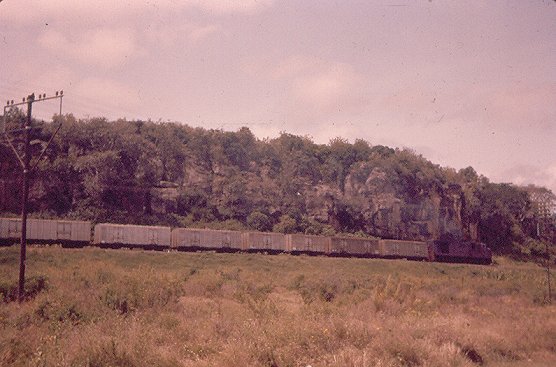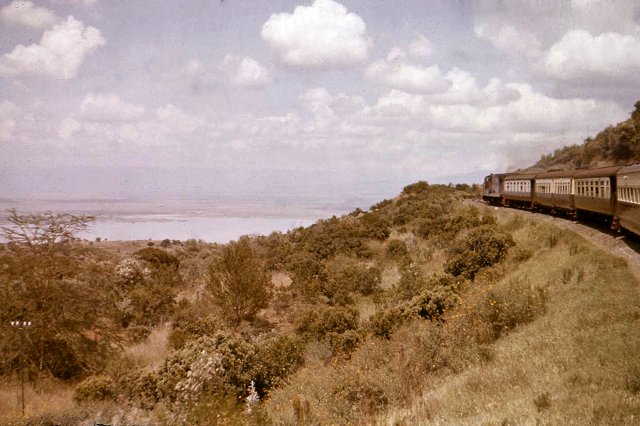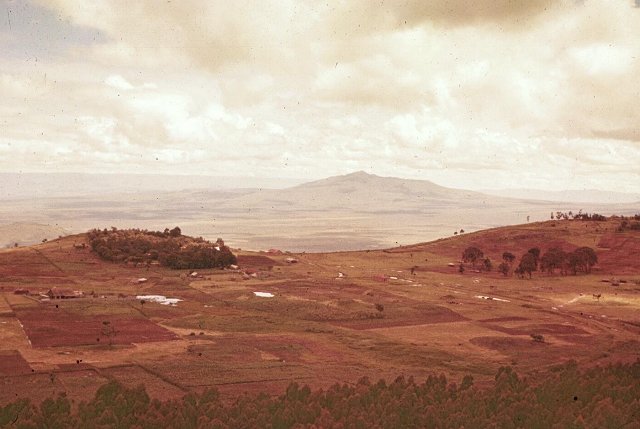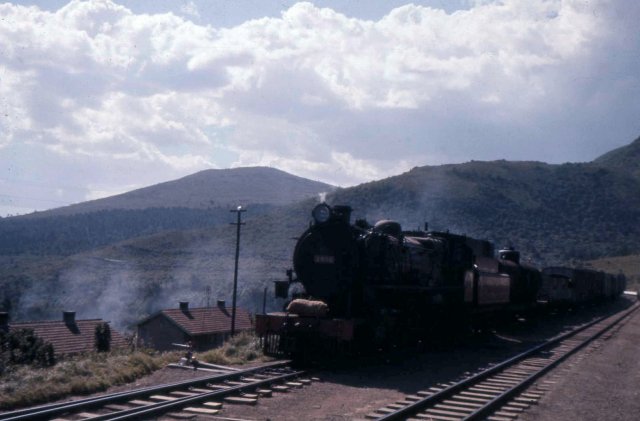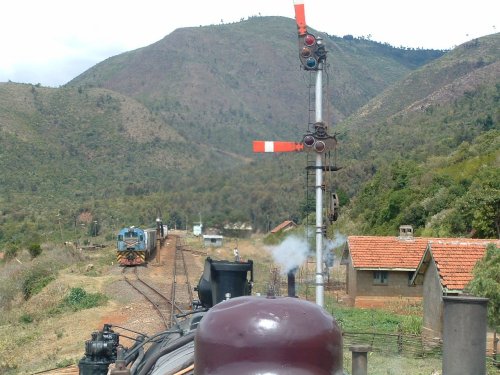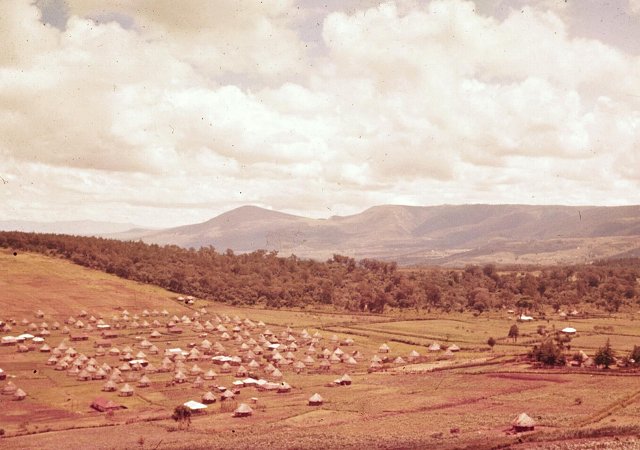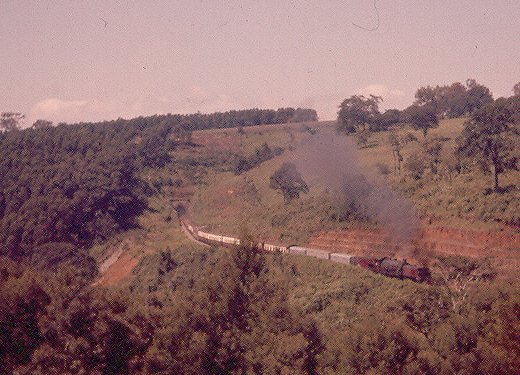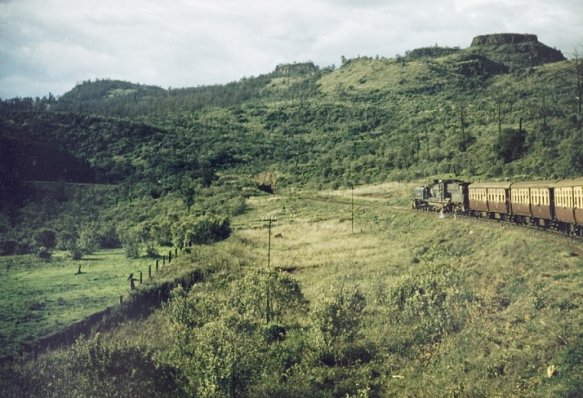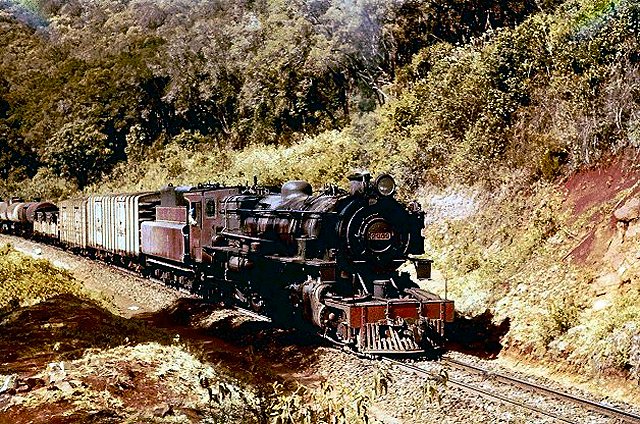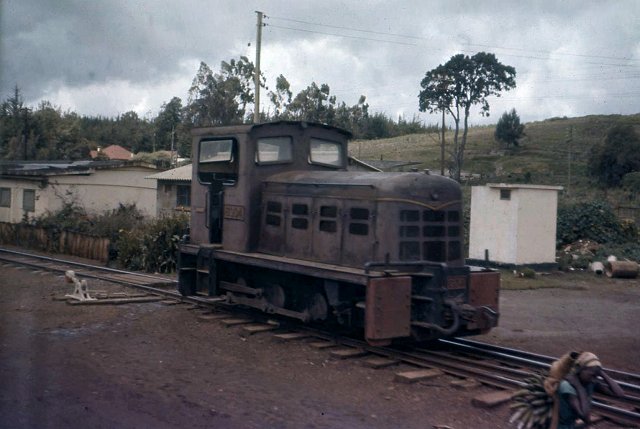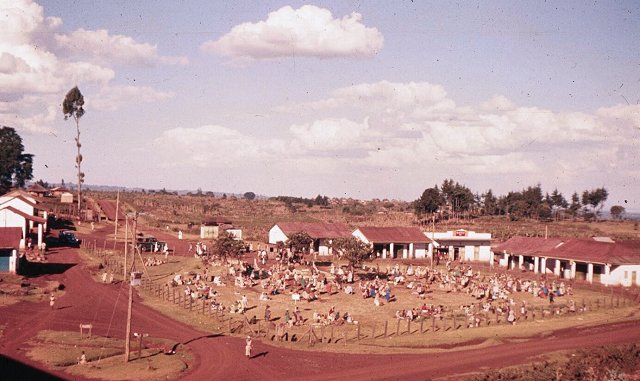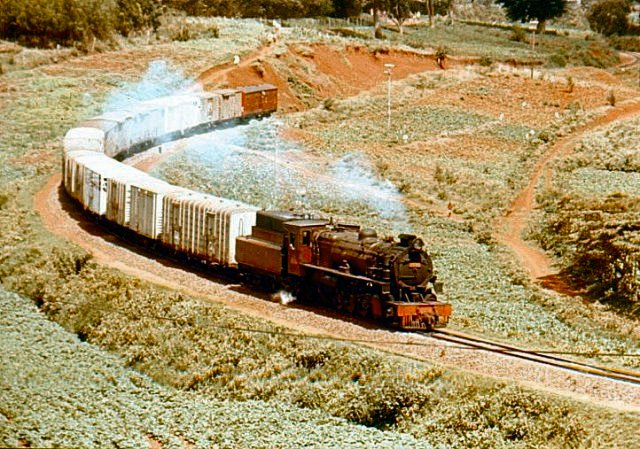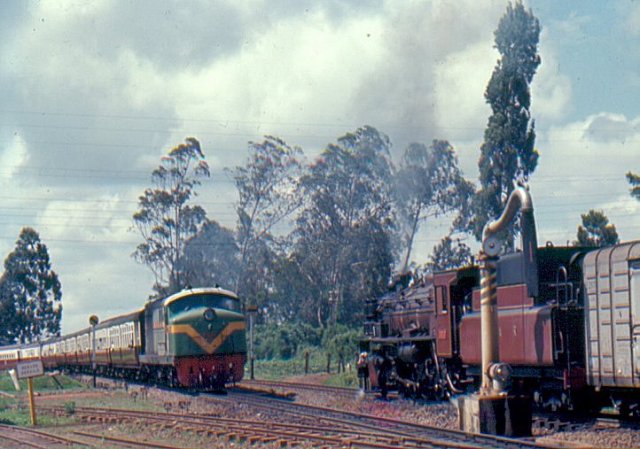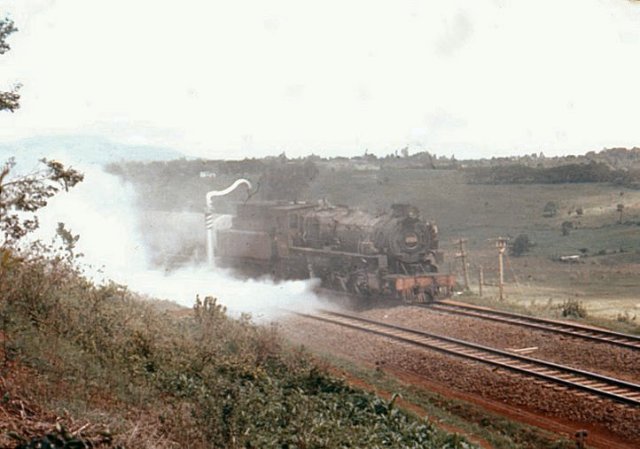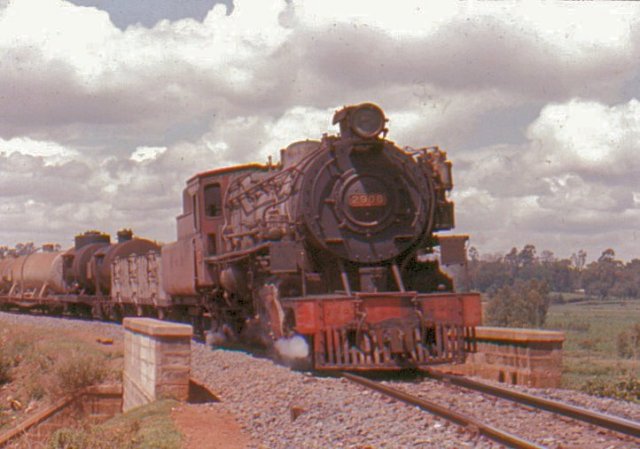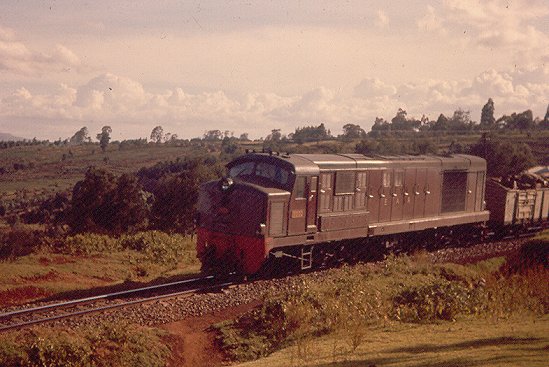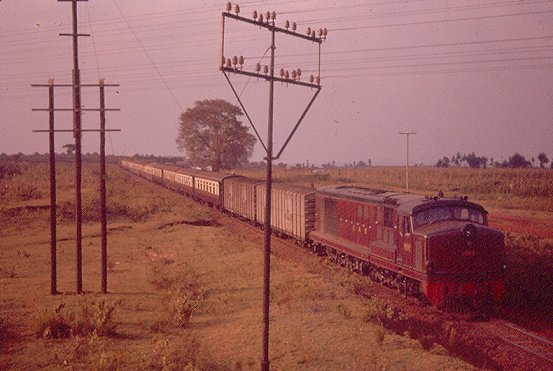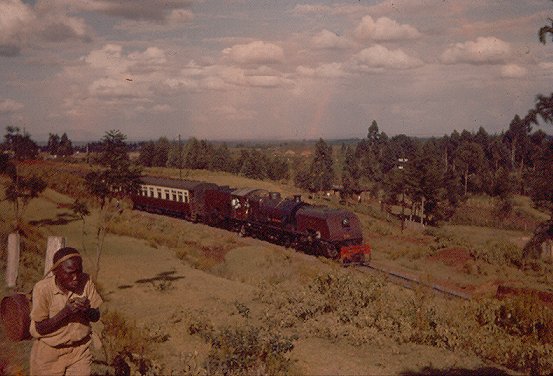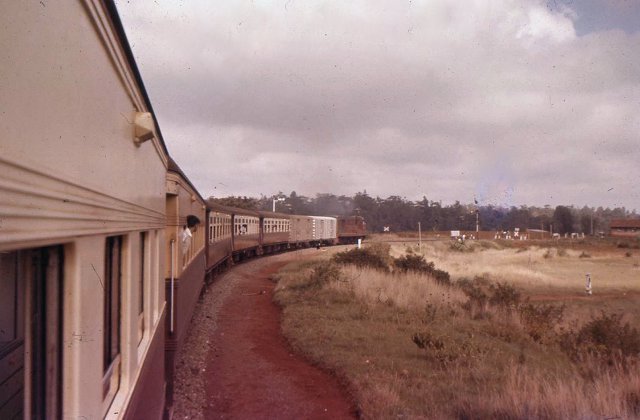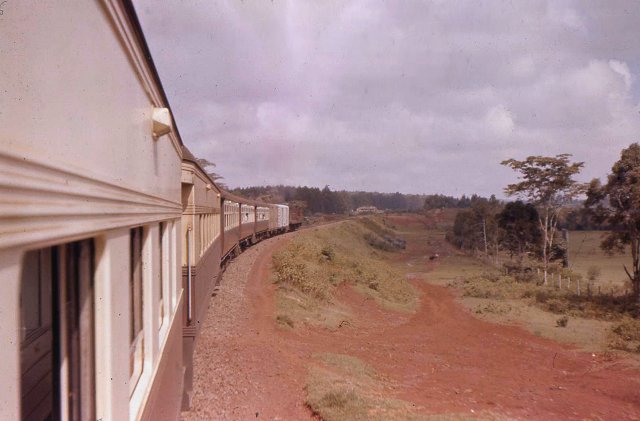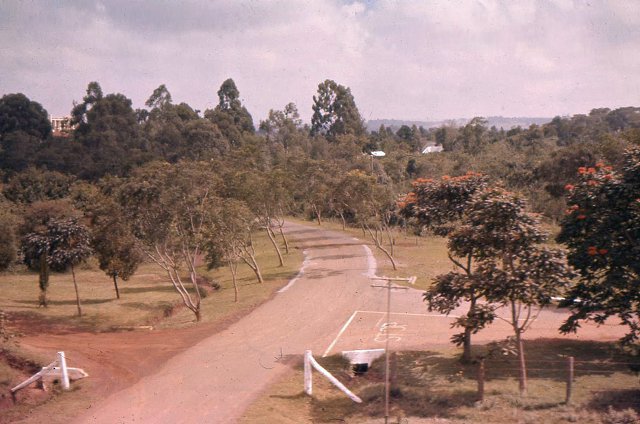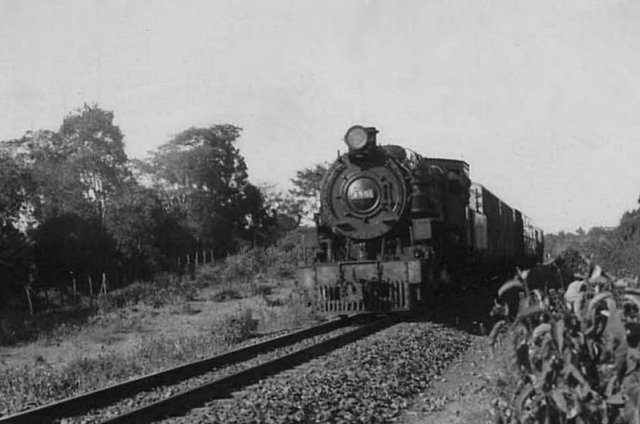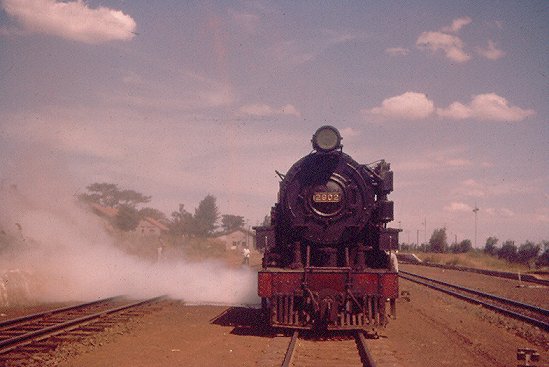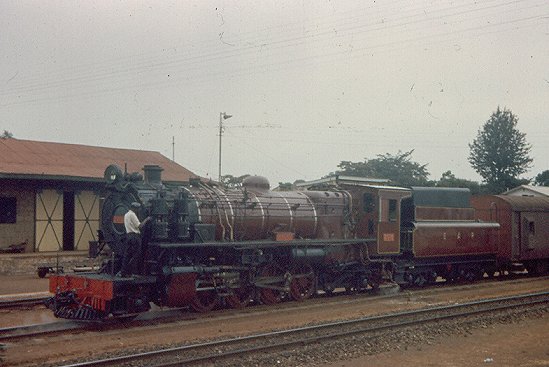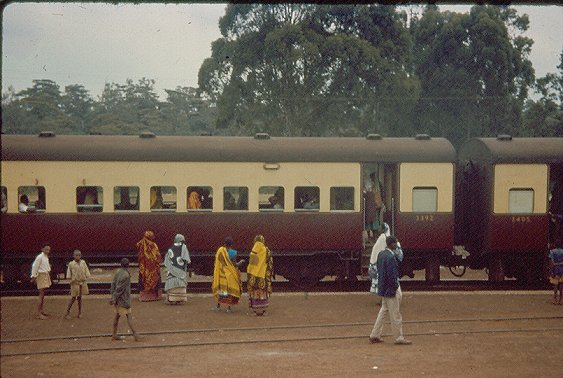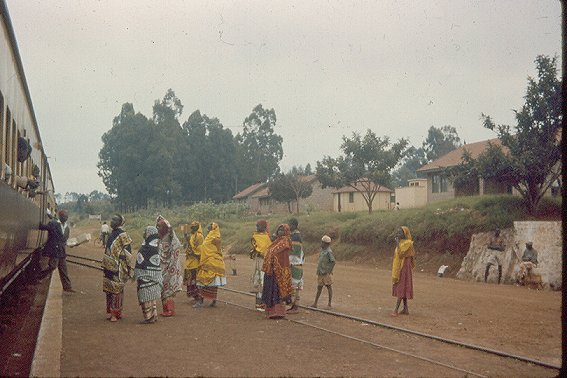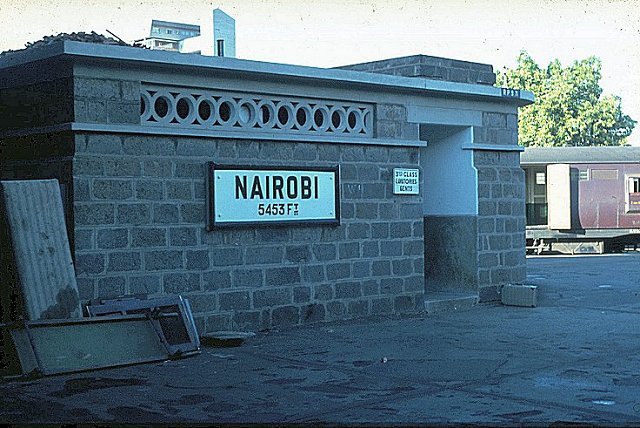|
|
East African Railways and Harbours Kampala to Nairobi |
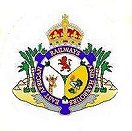 |
|
|
The Mail Train ran three times a week between Nairobi and Kampala and conveyed first and second class accommodation only. Many parents living in Uganda in the 1950s and early 60s sent their children to school in Kenya and School Trains ran between Kampala and Nairobi/Eldoret at the start and end of each 12 week term. There were separate trains for secondary school boys and girls, but boys and girls attending primary school were conveyed on the same train. Sometimes a secondary girls' train would have coaches attached for primary school pupils travelling to the Hill School in Eldoret where the train arrived from Kampala in the dark at 0530. The journey from Kampala to Eldoret took about twelve hours and that to Nairobi took about twenty four after the completion of the Busembatia to Jinja direct line in 1961. This line cut two hours off the journey and trains no longer called at Mbulamuti (for Namasagali) after which primary kids used to be sent to bed under the eagle eye of the lady escorts. Please note: As far as possible the photographs appear in sequence Kampala to Nairobi, but the trains may be travelling in either direction. |
|||
|
|
|||
|
Kampala Railway Station - the start of so many journeys to school, at first, for many, in Eldoret and then, later, in Nairobi. - PHOTO Malcolm McCrow |
|||
|
|
|||
|
A Mail Train arriving at Kampala at what looks like the low level platform after the platform adjoining the main station building had been closed - PHOTO Geoff Pollard |
|||
|
|
|||
|
Happy schoolboy - memories of arriving on a school train from Eldoret or Nairobi. The engine appears to be 58 Class 5804 (see later) - PHOTO Geoff Pollard |
|||
|
|
|||
|
Sometimes during holidays we would go to watch the Mail Train for Nairobi depart at 1715, thankful that we weren't going on it. Here the train is standing at the single high level platform used until the early 60s - PHOTO Malcolm McCrow |
|||
|
|
|||
|
Happy days in the school holidays with an unidentified 60 Class on shed at Kampala. - PHOTO Malcolm McCrow |
|||
|
|
|||
|
There was never a problem wandering around the shed in the late 50s. Class leader 6001 Sir Geoffrey Archer. This locomotive was renamed Umoja [Unity] in 1962 and after independence in Uganda was the only 60 Class still to be named. Until 1960 both Mail Trains and School Trains were invariably headed by 60 Class locomotives between Kampala and Nakuru. The 60 Class was also used between Kampala and Kasese on the daily overnight service. However it was only on Tuesdays, Fridays and Sundays that first and second class was carried - this working connecting with the first and second class only Mail Trains. The return working for all these passenger trains left Kasese at 1640. - PHOTO Malcolm McCrow |
|||
|
|
|||
|
An 11 Class tank engine on the Kampala to Port Bell branch - PHOTO Iain Mulligan |
|||
|
|
|||
|
The motor vessel SYBIL unloading at Port Bell which was at the end of a a six mile branch line from Kampala. Mixed passenger and freight trains ran three times a week to and from Kampala to meet the round the Lake service which by 1962 was operated by the motor vessel VICTORIA. The train journey between Kampala and Port Bell took 20 minutes and only 2nd and 3rd class was provided - PHOTO Malcolm McCrow |
|||
|
|
|||
|
Unique in that it was the only locomotive to have "EAR&H" on the tenders, 5804 prepares to depart Kampala with the Mail Train in October 1962, just after Uganda gained independence. PHOTO Jim Fowler |
|||
|
|
|||
|
Departing Kampala - after passing behind the Ministry of Works Central Workshops the train came to this level crossing which was a favourite place for a final waive - PHOTO Malcolm McCrow |
|||
|
|
|||
|
The view from the crossing as the Mail Train heads off on its long journey to the coast - PHOTO Jim Fowler |
|||
|
|
|||
|
The EAR&H had few serious accidents, but on 3 January 1963, just 23 miles from Kampala, a freight train with a caboose and 6 tank cars of high octane aviation fuel for Entebbe Airport stalled on the gradient. After setting back, the driver made a run at the gradient which the engine cleared with ease and tore off down the other side where it derailed. The escaping fuel was ignited by the Garratt's oil furnace and the driver and firemen were killed. After three days of continuous round-the-clock working the single track line to Nairobi was re-opened. PHOTO A J Hudson. |
|||
|
|
|||
|
Kampala bound Mail passing a Tribal headed freight at Seta, 21 miles from Kampala - PHOTO Malcolm McCrow |
|||
|
|
|||
|
The School Trains ran to the same schedule as the Mail Trains, but on days when the Mail did not run. The consist was virtually the same, although there was often only one, or no first class coach at all, on many of the School Trains. Here a Giesel ejector fitted 58 Class heads a Kampala bound Mail Train through Kawolo, 226 miles from Eldoret and 31 miles from Kampala. The oil fired furnace is clearly visible. A Kampala bound freight is headed by a 60 Class still to be fitted with its Giesel ejector. PHOTO A J Hudson. |
|||
|
|
|||
|
"A Guide To Uganda" (Crown Agents, Curwin Press 1954) shows a 56 Class, 5603, at a station between Kampala and Jinja. The 56s were replaced by the 60s in 1954-5 - PHOTO East African Railways and Harbours |
|||
|
|
|||
|
Classic scene with 60 Class heading a Mail Train bound for Kampala over Jinja Bridge. The photograph was taken after 1958 as the dining car (last vehicle in photograph) has acquired the all cream livery which was introduced after the Queen Mother's visit that year when several of the the aluminium coaches were painted cream to give a uniformity to the royal train consist. By 1961 all passenger coaches had acquired the dark maroon and cream livery which had previously only appeared on 2nd and 3rd class stock. - PHOTO East African Railways & Harbours |
|||
|
|
|||
|
Happy days and homeward bound. Most pupils tended to get to a window for the crossing of the White Nile just after the train left Jinja. At primary school, many boys would carve "propellers" which they held out the window as the train went along at around 25 to 30 miles per hour. - PHOTO Malcolm McCrow |
|||
|
|
|||
|
Not so happy days. It is January 1956 and a School Train for Eldoret has just arrived at Jinja - still in daylight. Until 1961, trains departed Kampala at 1500, as opposed to 1715, and thus arrived in Jinja just before sunset. The 60 Class is taking on water and this was my first railway photograph taken with a Brownie 620 camera that I had been given for Christmas - PHOTO Malcolm McCrow |
|||
|
|
|||
|
Tribal Class 31, 3139, Pokomo was built by the Vulcan Foundry in 1956 and was allocated to the Uganda Railways in 1977. It is seen heading its train at Kamuli in 1969. Kimuli, the first station eastbound after Mbulamuti, was by-passed by first and second class Mail Trains after the Tororo-Namaga deviation was completed in 1962 but the all stations Nairobi/Kampala second and third class passenger trains were still routed over the original main line via Mbulamuti which was the junction for Namasagali - PHOTO Glyn Constantine |
|||
|
|
|||
| School Trains and Mail Trains arrived at Eldoret at 0530 from Kampala and 2230 for Kampala; so, unless the train was running late from Kampala pupils never got to see Eldoret Station (left) in daylight - PHOTO EAR&H Magazine. | |||
|
|
|||
|
Sosian was the next station out from Eldoret, east bound, and then Plateau (above) PHOTO Louise Heckl (2006). |
|||
|
|
|||
|
Leaving Eldoret in the dark, the train arrived at Kaptagat just after dawn. There being relatively few primary school pupils for Kaptagat School they travelled on the Mail Train to and from stations in Uganda. - PHOTO Malcolm McCrow |
|||
|
|
|||
|
School Train between Eldoret and Nakuru headed by a 60 Class Garratt. - PHOTO Malcolm McCrow |
|||
|
|
|||
|
Lake Narasha between Timboroa and Equator - the single line metre gauge track runs alongside this little lake which has a pumping station by the shore. Sometimes you could hear the generator in the pumping station. This photograph was taken in the early morning on the way to Nairobi. - PHOTO Malcolm McCrow |
|||
|
|
|||
|
Lake Narasha with the Timboroa Forest in the background. Trains heading for Kampala passed the lake in the dark. PHOTO Malcolm McCrow |
|||
|
|
|||
|
Between Timboroa and Equator the train negotiates one of the three spirals that were then on the system. There is another spiral between Nairobi and Mombasa at Mazeras, but the third spiral has not survived - at least not as part of a functioning railway. It was near Dura River on the Western Extension between Kampala and Kasese, a line which is no more. Here the Royal Train conveying the Queen Mother to Eldoret is seen on the spiral. A staged EAR&H publicity photograph (left) showing a first class compartment which was finished in blue leather and green formica - EAR&H Magazines |
|||
|
|
|||
|
58 Class taking Water - possibly Timboroa - PHOTO Malcolm McCrow |
|||
|
|
|||
|
Departing the station after taking on water. The sixth coach from the engine is a dining car and is sandwiched between two first class coaches. - PHOTO Malcolm McCrow |
|||
|
|
|||
|
Timboroa, at 9001 feet above sea level, is the highest station on a main line anywhere in the Commonwealth. The building is typical of many stations in the Kenya Highlands. Compare this photograph with the one of Plateau - PHOTO Malcolm McCrow |
|||
|
|
|||
|
Platform hawkers sell their wares during the stop at Timboroa. - PHOTO John Craig McCrow |
|||
|
|
|||
|
A dining car attendant in white, a supervisor in khaki and other members of the domestic train crew on the platform at Timboroa - PHOTO John Craig McCrow |
|||
|
|
|
||
|
Elevation was given in feet at every station. After Timboroa the summit is reached at 9136 feet. - see below. The next station is also significant - Equator at 8176 feet. - PHOTOs Malcolm McCrow |
|||
|
|
|||
|
Summit viewed from a Nairobi-bound School Train taken from a second class coach behind the only first class one in the consist. - PHOTO Malcolm McCrow |
|||
|
|
|||
|
KUR Postcard showing KUR Class EC1 still in grey but sporting EAR&H 50 Class number board as it heads a Nairobi bound freight over the summit. The locomotive number of the 50 Class was also illuminated on either side of the headlight. - PHOTO EAR&H |
|||
|
|
|||
|
The equator runs across the platform at Equator. A "Whistle" diamond sign is just visible at the end of the platform. Generally the Mail Train and School Trains did not stop at Equator, but a first class ticket holder on a Mail Train could request a halt at any station where a run through would be the norm. School Trains would stop if booked in advance. - PHOTO Malcolm McCrow |
|||
|
|
|||
|
Equator. Observant passengers would have noticed different equator signs by the trackside as the train wound its way over the equator at least three times. I have read that in fact the train crossed the equator 5 times, but I only ever saw three signs. - PHOTO Malcolm McCrow |
|||
|
|
|||
|
No doubts about this one! PHOTO James Lang Brown |
|||
|
|
|||
|
A Kampala bound School Train somewhere in the Highlands - possibly west of Maji Mzuri. The dining car is the fourth coach from the front of the train; the third coach is probably a kitchen car. - PHOTO Malcolm McCrow |
|||
|
|
|||
|
A Kampala bound Mail Train in the forests between Nakuru and Timboroa taken in 1962 - PHOTO Malcolm McCrow |
|||
|
|
|||
|
On nearing Nakuru eastbound this instance of severe soil erosion had produced a mini Grand Canyon effect - another landmark that became familiar over the years. PHOTO Malcolm McCrow |
|||
|
|
|||
|
The only double track sector on the whole system is between Nakuru East and Nakuru West. The train is heading for Nakuru - PHOTO Malcolm McCrow |
|||
|
|
|||
|
Nakuru Motive Power Depot seen on the left when approaching Nakuru from Eldoret - PHOTO Malcolm McCrow |
|||
|
|
|||
|
Nakuru Shed usually put on a good array of locomotives - in the two photographs above there are 60 Class, conspicuous with the sloping front tenders, 55 Class, 54 Class, Tribal tender locomotives and a tank engine - PHOTO Malcolm McCrow |
|||
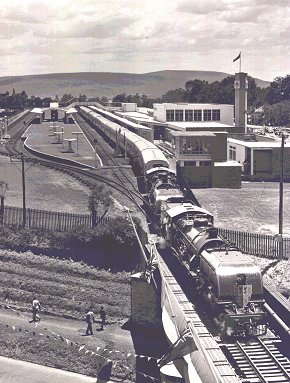
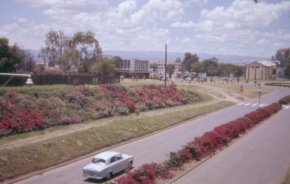 |
|||
|
The Royal Train (left)
carrying the Queen Mother during her visit to Kenya in 1958. PHOTO East
African Railways and Harbours. (Courtesy of Sir James Farquharson) View from a train crossing the over bridge at the west end of Nakuru station (above) PHOTO Malcolm McCrow |
|||
|
|
|||
|
Nakuru was the most modern station on the line - complete with a public address system, colour light signalling and double track westbound between Nakuru East and the divergence of the former mainline to Kisumu. During stops at Nakuru passengers could buy refreshments, books and newspapers from a trolley which passed down the platform while the locomotive was being changed. PHOTO Malcolm McCrow |
|||
|
|
|||
|
60 Class (still bearing its Governor's name plate and without Giesel ejector) awaits to take the Uganda Mail forward from Nakuru - PHOTO Geoff Pollard |
|||
|
|
|||
|
Kampala bound in1961 and 5804 - the uniquely lettered EAR&H - has just handed over its train to a 60 Class which will run through to Kampala. 5804 has run round its train and is about to go on shed - PHOTO Malcolm McCrow |
|||
|
|
|||
|
By 1962, 58 Class locomotives had replaced the 60s between Nakuru and Kampala. Between Nairobi and Nakuru the 58 Class had in turn been replaced by 90 Class 1-Co-Co-1 diesels built by English Electric. PHOTO Malcolm McCrow |
|||
|
|
|||
|
90 Class 9010 waits to take over from the 58 which has brought the train from Kampala. PHOTO Malcolm McCrow |
|||
|
|
|||
|
9010 awaits the right away for Nairobi - PHOTO Malcolm McCrow |
|||
|
|
|||
|
English Electric 90 Class at Nakuru at the head of No 2 Down (Kampala to Nairobi and Mombasa) - PHOTO James Lang Brown |
|||
|
|
|||
|
Mount Longonot - the dormant volcano dominating the floor of the Rift Valley. Sometimes giraffe were scene from the passing train. - PHOTO Malcolm McCrow |
|||
|
|
|||
|
Similar view showing the electricity pylons - PHOTO Geoff Pollard |
|||
|
|
|||
|
With Mount Longonot forming the background, Tribal Class 29, 2931, Turkana, heads a freight across the Rift Valley. Turkana was built by the North British Locomotive works in Glasgow and was the last of the class entering service in 1955. It went to Tanzania Railways in 1977 - PHOTO Glyn Constantine |
|||
|
|
|||
|
A 58 Class heads a freight along the valley floor near Naivasha. PHOTO Iain Mulligan |
|||
|
|
|||
|
A 90 Class heads a freight along the valley floor near Naivasha. PHOTO Iain Mulligan |
|||
|
|
|||
|
Diesel headed Mail Train heading towards Nakuru with Lake Nakuru or Elmentaita in the background - PHOTO Malcolm McCrow |
|||
|
|
|||
|
On the eastern rim of the Rift Valley as a train heads for Nakuru - PHOTO Malcolm McCrow |
|||
|
|
|||
|
Longonot from the eastern rim - PHOTO Malcolm McCrow |
|||
|
|
|||
|
This picture captures the atmosphere of Kijabe with the blue haze of the cooking fires rising lazily in the late afternoon sunshine. A 29 Class is in the loop allowing the School Train to overtake. Many pupils would willingly have let the freight go first! The line to Nakuru is seen passing through the cutting before the bend at the left of the picture. PHOTO Malcolm McCrow |
|||
|
|
|||
|
Forty years later and restored 30 Class steam engine 3020 Nyaturu approaches Kijabe while a Kenya Railways freight waits in the same loop as that occupied by the 29 Class in the photograph above. The three aspect semaphore signal means the main is clear and the loop to the left is occupied. If the upper signal arm had been at 45o it would have meant "proceed with caution and be prepared to stop" PHOTO Trevor Heath Live Steaming Kenya |
|||
|
|
|||
|
Village scene between Kijabe and Limuru - PHOTO Malcolm McCrow |
|||
|
|
|||
|
A Mail Train has just exited Limuru Tunnel - PHOTO Iain Mulligan |
|||
|
|
|||
|
Apparently a 55 Class taken in 1963 and possibly approaching Limuru Tunnel - PHOTO James Lang Brown |
|||
|
|
|||
|
Unidentified 29 Class possibly in vicinity of Limuru - PHOTO Geoff Pollard |
|||
|
|
|||
|
A Class 80 shunter at Limuru. Note the young woman with her load of banana on her back - PHOTO Malcolm McCrow |
|||
|
|
|||
|
A Kikuyu village near Nairobi - PHOTO Malcolm McCrow |
|||
|
|
|||
|
A 29 Class heading a freight train near Kikuyu - PHOTO Kevin Patience |
|||
|
|
|||
|
A green liveried East African Railways Corporation heads an all classes passenger train into Kikuyu while a freight train headed by a 29 Class awaits departure - PHOTO Kevin Patience |
|||
|
|
|||
|
A 29 Class headed freight at Kikuyu - PHOTO Kevin Patience |
|||
|
|
|||
|
2908 Elgeyo heads a freight towards Nairobi - PHOTO Kevin Patience |
|||
|
|
|||
|
A 90 Class heading a freight near Kikuyu - PHOTO Iain Mulligan |
|||
|
|
|||
|
A 90 Class with passenger train between Limuru and Kikuyu - PHOTO Iain Mulligan |
|||
|
|
|||
|
A Third Class All Stations train headed by a 60 Class nearing Nairobi - PHOTO Iain Mulligan |
|||
|
|
|||
|
90 Class hauled Mail Train for Kampala approaching Dagoretti - PHOTO Malcolm McCrow |
|||
|
|
|||
|
Mail Train for Kampala in the outskirts of Nairobi - PHOTO Malcolm McCrow |
|||
|
|
|||
|
Duke of York School over bridge - PHOTO Malcolm McCrow |
|||
|
|
|||
|
A 29 Class heading a freight bound for Nairobi passing through the grounds of the Duke of York School near the Glade (off photograph to the left) - PHOTO Malcolm McCrow |
|||
|
|
|
||
|
A 59 Class hauls its freight train under the Ngong Road bridge between Kibera and Dagoretti (left) and the same 59 later as it storms out of Limuru with a westbound freight (right) ; - VIDEO Harry Dodge |
|||
|
|
|||
|
2902 Bukusu, westbound at Kibera - PHOTO Iain Milligan |
|||
|
|
|||
|
2915, appropriately named Kikuyu at Kibera with a caboose behind the locomotive - PHOTO Iain Mulligan |
|||
|
|
|||
|
Third Class carriages at Kibera. Some were labelled "Wanawake" - (Women Only). PHOTO Iain Milligan |
|||
|
|
|||
|
Colourful dresses at Kibera, the last station before Nairobi - PHOTO Iain Mullligan |
|||
|
|
|||
|
Journey's end - the only station I ever remembered the exact height of. After metrication Nairobi's name boards were the only ones to retain the altitude shown in imperial units. PHOTO Peter Ritchie |
|||
